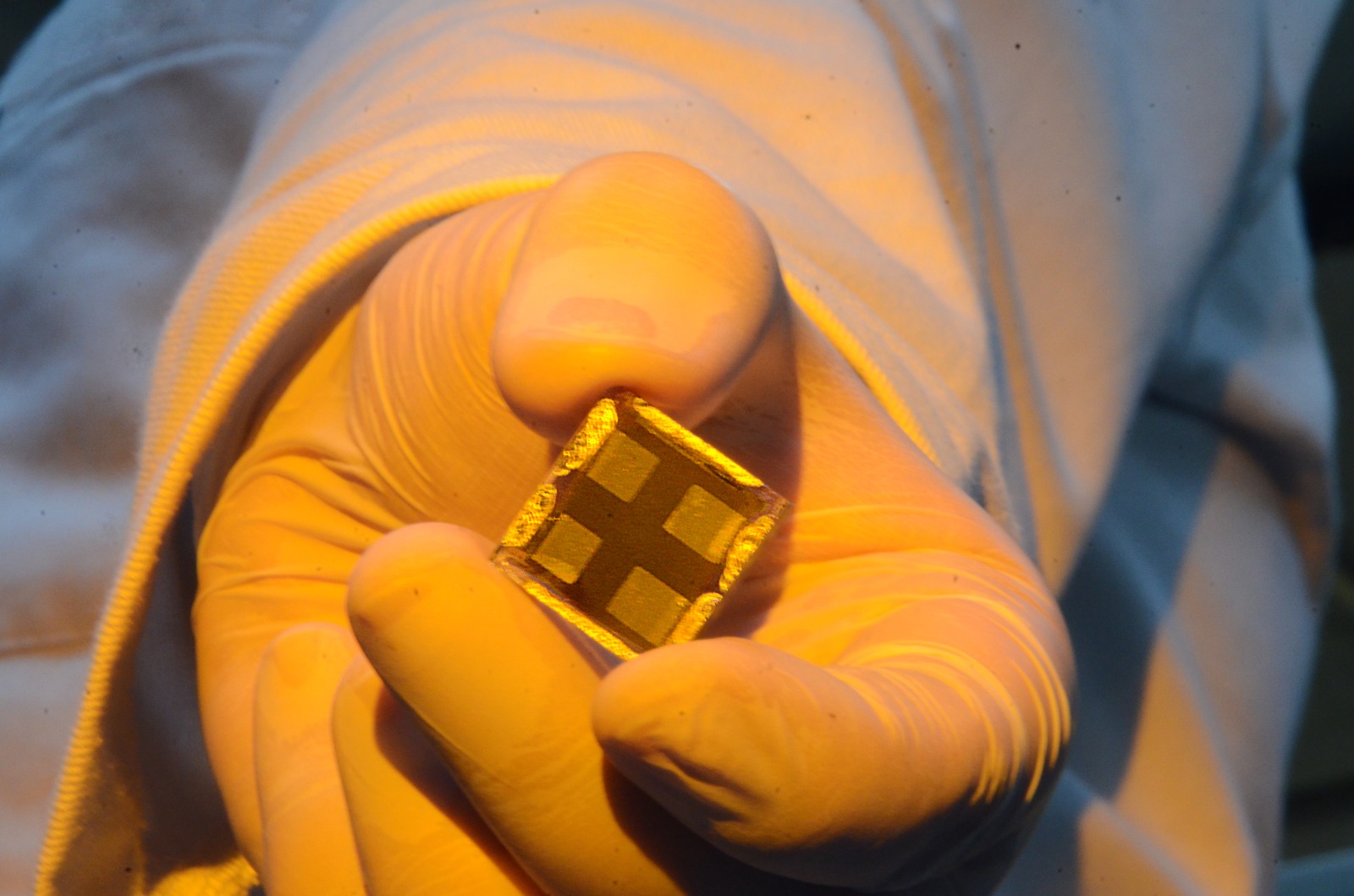

The research was conducted at the Center for Innovation on New Energies (photo: CINE)
The material is as efficient as silicon in generating clean energy and has lower production costs, greater lightness and flexibility. Its rapid degradation is one of the main obstacles to overcome to make its use viable.
The material is as efficient as silicon in generating clean energy and has lower production costs, greater lightness and flexibility. Its rapid degradation is one of the main obstacles to overcome to make its use viable.

The research was conducted at the Center for Innovation on New Energies (photo: CINE)
Agência FAPESP* – A study carried out at the Federal University of ABC (UFABC), in the state of São Paulo, Brazil, presents a new way to mitigate the rapid degradation of perovskite solar cells. The problem, which limits the use of these devices in everyday life, has challenged researchers in the field to find viable solutions.
Perovskite solar cells are a very promising photovoltaic technology. They are as efficient as silicon cells and have lower production costs. In addition, they are light, flexible and semi-transparent, which opens up numerous possibilities for applications such as windows, clothing or tents that can generate electricity from sunlight.
However, the commercialization of these cells is hampered by their low durability due to the degradation that perovskite materials undergo when exposed to humidity and ambient temperature conditions during both manufacturing and use. This degradation affects the performance of the devices over time and therefore their durability.
In an article published in the journal Solar Energy Materials and Solar Cells, the UFABC team describes a process that is unique in that it can be carried out without the strict humidity and temperature controls that exist in laboratories dedicated to researching these devices.
“The solar cells in this work were obtained under ambient conditions, without major humidity controls, which may be more compatible with industrial preparation conditions,” explains Professor André Sarto Polo, coordinator of the study and member of the Center for Innovation on New Energies (CINE) – an Engineering Research Center (ERC) supported by FAPESP and Shell.
Modulating the composition
The perovskite family includes materials with different chemical compositions. They all share a common structure of positively charged ions (cations) and negatively charged ions (anions). Perovskites based on methylammonium (MA+) and formamidinium (FA+) cations are the most studied for use in solar cells.
In this new study, supported by FAPESP through three projects (17/11986-5, 22/07268-8 and 23/09820-2), the authors incorporated increasing amounts of formamidinium cations into methylammonium-based perovskites, characterized each of the materials obtained and assembled solar cells with them. The production and characterization of the materials and devices were carried out in environments with relative humidity ranging from 40% to 60%.
To test their stability, these solar cells were exposed to ambient temperature and humidity for 90 days. During this period, the researchers systematically studied the properties of all the devices in order to determine the influence of the addition of formamidinium on the performance of the solar cells.
While solar cells without FA+ showed a sharp drop in efficiency immediately after assembly and stopped working after 30 days, cells with more than 25% FA+ maintained 80% efficiency at the end of 90 days.
“This work demonstrates how the incorporation of FA+ cations into MA+-based perovskites causes an increase in the durability of perovskite solar cells fabricated and measured under ambient conditions,” summarizes Polo.
According to him, this is because the addition of formamidinium causes an increase in the size of the grains that make up the crystalline structure of the perovskite, reducing the overall length of the edges. Since the edges are points where moisture accumulates, the perovskite suffers less degradation and the solar cell maintains its good performance for longer.
The research, conducted during Lucas Polimante’s doctoral studies, opens up the prospect of developing more durable perovskite solar cells that can be produced at lower cost and in more environmentally friendly conditions.
In addition to FAPESP and Shell, the group received funding from the National Council for Scientific and Technological Development (CNPq) and the Coordination for the Improvement of Higher Education Personnel (CAPES), as well as strategic support from the National Agency for Petroleum, Natural Gas and Biofuels (ANP).
The article “Enhancing the stability of methylammonium-based perovskite solar cells prepared in ambient conditions by adding formamidinium cations” can be read at: www.sciencedirect.com/science/article/abs/pii/S0927024825001230?via%3Dihub.
* With information from Veronica Savignano, from CINE
Republish
The Agency FAPESP licenses news via Creative Commons (CC-BY-NC-ND) so that they can be republished free of charge and in a simple way by other digital or printed vehicles. Agência FAPESP must be credited as the source of the content being republished and the name of the reporter (if any) must be attributed. Using the HMTL button below allows compliance with these rules, detailed in Digital Republishing Policy FAPESP.





